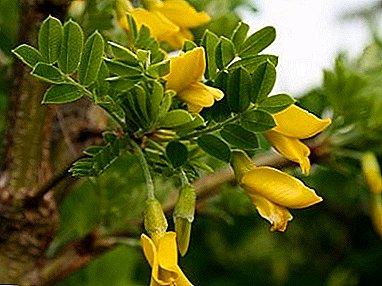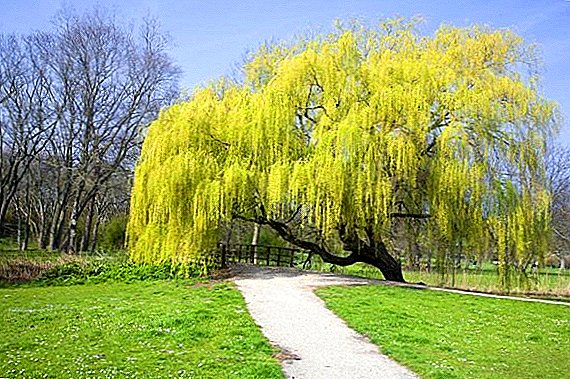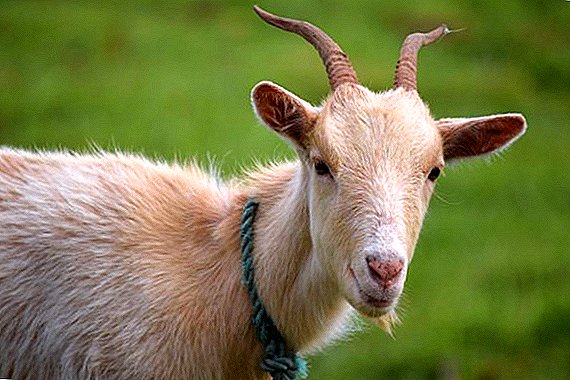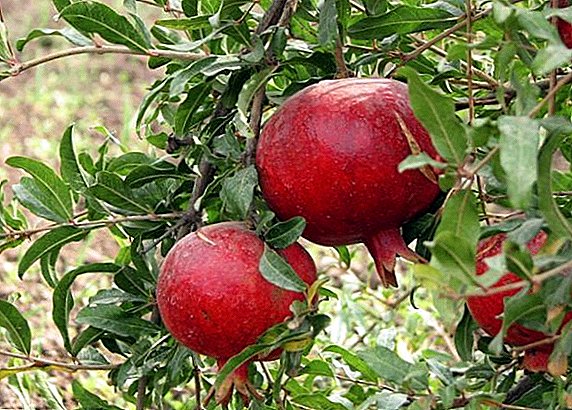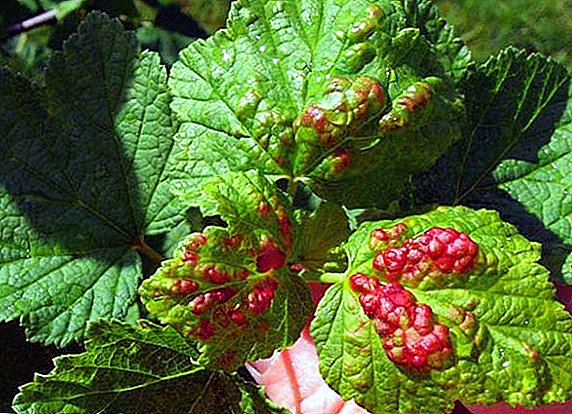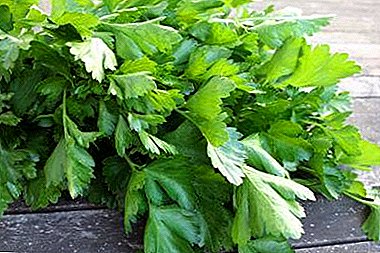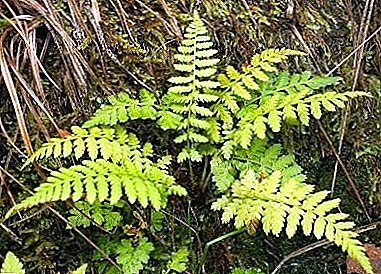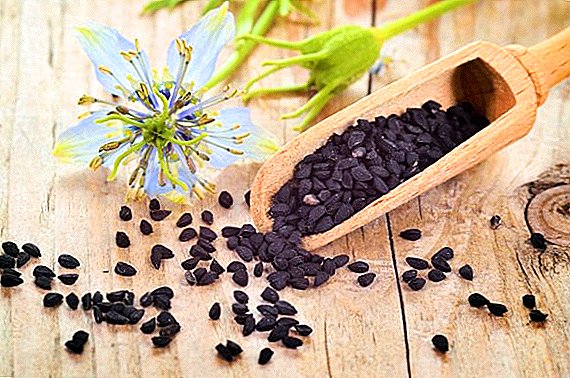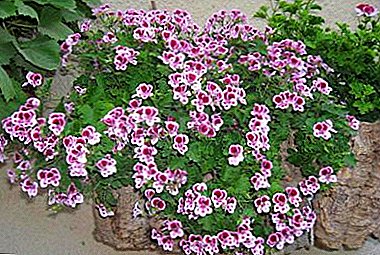
Many people believe that geranium and pelargonium are one and the same flower. However, in the 18th century, Dutch scientists expressed the opinion that pelargonium is one of the flowers of the geranium family.
Geranium and pelargonium are very similar in appearance, but geranium easily tolerates cold and frost, unlike pelargonium. In this article we will look at one of the types of pelargonium - Angel Pelargonium.
Botanical description, history and price
Angel Pelargonium (Angel pelargoniums) - This plant, which appeared as a result of the crossing of curly and royal species, from which she inherited thick foliage and small flowers. This is a fairly old variety, bred in the early 20th century.
Angel Pelargonium received its name from the word Angeline - in honor of the first variety of royal subspecies. All Angel Pelargonium varieties available today are hybrids of various parent plants. This flower is also called viola-color pelargonium, or geranium viola, due to its flowers, similar to pansies.
A distinctive feature of this species is an ampel growth, like that of the royal bushes. This type of growth is not characterized by vertical, but growing down branches that hang over the edge of the pot.
Description of appearance and features
In appearance, angelic pelargoniums resemble royal pelargoniums in miniature. Usually they bloom profusely and differ in many flowers against the background of thick terry foliage. Angel Pelargoniums are not tall, but they are hardy and grow slender and lush. At the same time, their foliage has a fragrant smell, reminiscent of lemon scent. The flowers of the viololocolor pelargonium come in a variety of shades, such as pink, violet, white, two- or three-colored, with edging along the edges.
Distinctive features of the colors of this species are their light-loving and resistance to arid weather, as well as unpretentious care and relatively rapid growth rates. But to obtain a beautiful and abundantly flowering plant, it is necessary to ensure proper care for it. As a rule, the flowering period is about 9 months.
As mentioned above, with the growth of angel pelargonium hang down, therefore, are well suited for growing in hanging structures and garden pots. It should also be noted that the best of these pelargoniums bloom in groups, so they are better to plant 5-7 pieces in one container. If the flower grows in the sun, it can even not be cut, as Pelargonium Angel does not lose its shape and maintains a neat appearance.
Common varieties and their photos
To date horticulturists not many varieties of Angel Pelargonium, since this species is a hybrid. But breeders have deduced several beautiful forms, of which Angel Viola and Angel Orange are the most popular and loved ones.
Viola
Angel Viola is a small neat bush that pleases with plenty of flowering all summer long. The flowers of the plant are colored bright pink and are distinguished by crimson spots on the petals. The leaves of this plant exude a pleasant lemon scent, contributing to the improvement of well-being.

Orange
This variety of Angel Pelargonium (Angeleyes Orange) is distinguished by unpretentiousness and abundant flowering. Angel Orange flowers are distinguished by a bright pink-orange color, their center is colored maroon-brown, and there are maroon veins all over the petal. Beautiful delicate leaves of the plant give it a decorative effect. In addition, such bright flowers will be an excellent decoration for garden planters or trellises, as well as give a spectacular look to any room.

Where and how to plant?
- If you plant pelargonium seeds, it is better to plant them in the middle of winter in small containers with peat or peat / sand mixture 1: 1.
- Then land should be treated with a substrate and covered with glass.
- After the emergence of shoots it is necessary to maintain soil moisture and the optimum temperature of 20-22 degrees.
- If you brought the geranium from the store or made a transplant, then you need to prepare the optimal composition of the soil.
- In addition, it is necessary to carry out regular pruning and watering. It should be noted that excessive watering can even lead to the death of a houseplant.
Lighting and location
Room Angel Pelargonium should be grown on well-lit window sills. In addition, the pot for its cultivation should be small. In the shade, the plant is only in growth, but may not give buds.
Reference. Angel Pelargonium is prone to growth in the shade and compact growth in the sun.
Soil requirements
For planting and transplanting angelic pelargoniums, you can take the soil in flower shopsWhich is suitable for geraniums and other indoor flowers. Ordinary soil mixed with peat can also be used. Before planting, carefully inspect the soil for the presence of insect larvae and other pests. If purchased pelargonium is transplanted, then the soil should be prepared with the composition of:
- turf;
- sand;
- humus;
- leafy ground.
You can also use the nutrient mixture for pelargoniums.which is sold in stores.
Home care
 It should be noted that for abundant flowering pelargoniums need a cool wintering, about 10-12 degrees Celsius. And during the period of active growth you need to feed them with various fertilizers, like any flowering houseplant. Especially important in the fertilizer is the presence of phosphorus and calcium, as well as a moderate nitrogen content. In addition, flowers should be watered in moderation, maintaining soil moisture, and be sure to remove dried flowers.
It should be noted that for abundant flowering pelargoniums need a cool wintering, about 10-12 degrees Celsius. And during the period of active growth you need to feed them with various fertilizers, like any flowering houseplant. Especially important in the fertilizer is the presence of phosphorus and calcium, as well as a moderate nitrogen content. In addition, flowers should be watered in moderation, maintaining soil moisture, and be sure to remove dried flowers.
You should not water the plant with fertilizer spray - it is harmful for the buds. In order for Pelargonium Angel to bloom and develop, only good lighting and optimum air temperature are required. In winter, when there is a shortage of natural light, it must be given extra light by fluorescent lamps. This condition ensures the plant compactness and abundance of flowering with growth.
Common diseases and pests
Great harm to pelargonium angel gray moldwhich appears as a gray bloom on the leaves. The cause of its occurrence is excessive dampness and poor ventilation of the room. To prevent this disease, it is necessary to provide enough space between the plants and in time to clean the plant from dry twigs and leaves.
For the same reason, the plant is subjected to stalk rotting, which manifests itself in the appearance of dark spots at the base of the latter. Usually this disease cannot be cured, therefore it is necessary to save at least the upper cuttings.
Like many indoor plants, Angel Pelargonium is susceptible to various fungal diseases. For prevention, it is necessary to treat the plant with special solutions.
Also one of the most common pests is whitefly, which appears in the form of small white spots or larvae on the lower part of the leaves. When buying plants should pay attention to the leaves of pelargonium. Also, before entering the plant from the garden into the room it is necessary to treat it with insecticides.
Breeding features
There are several ways of breeding Angel Pelargonium - seeds, cuttings and dividing the bush. One of the most productive methods of reproduction is considered to be grafting, since it is he who guarantees the preservation of varietal characteristics of the plant.
Cuttings
 Angel Pelargonium cuttings can be chosen at any time of the year, but it is better to do this at the end of winter - the beginning of spring, or after the end of flowering.
Angel Pelargonium cuttings can be chosen at any time of the year, but it is better to do this at the end of winter - the beginning of spring, or after the end of flowering.
- Cuttings should be taken from young and strong plants. With Pelargonium Angel it is necessary to cut cuttings 2.5-3 cm long, making an oblique cut in the lower part.
- This end can be treated with charcoal, preventing it from rotting.
- In the prepared substrate you need to stick the cuttings and cover with a can or a plastic bottle.
- In this case, it is necessary to observe the temperature regime of about 22 degrees.
- After about 1.5-2 weeks rooting should occur.
- In addition, the cuttings can be dipped in a container with water and wait for the roots to appear.
- After this, the cuttings should be transplanted into a container with soil.
Angel Pelargonium is the perfect decoration for any garden or room. With proper care, it will please its owner with abundant flowering and fragrant aroma. Her positive qualities include beauty, long term flowering, healing properties and unpretentious care.


